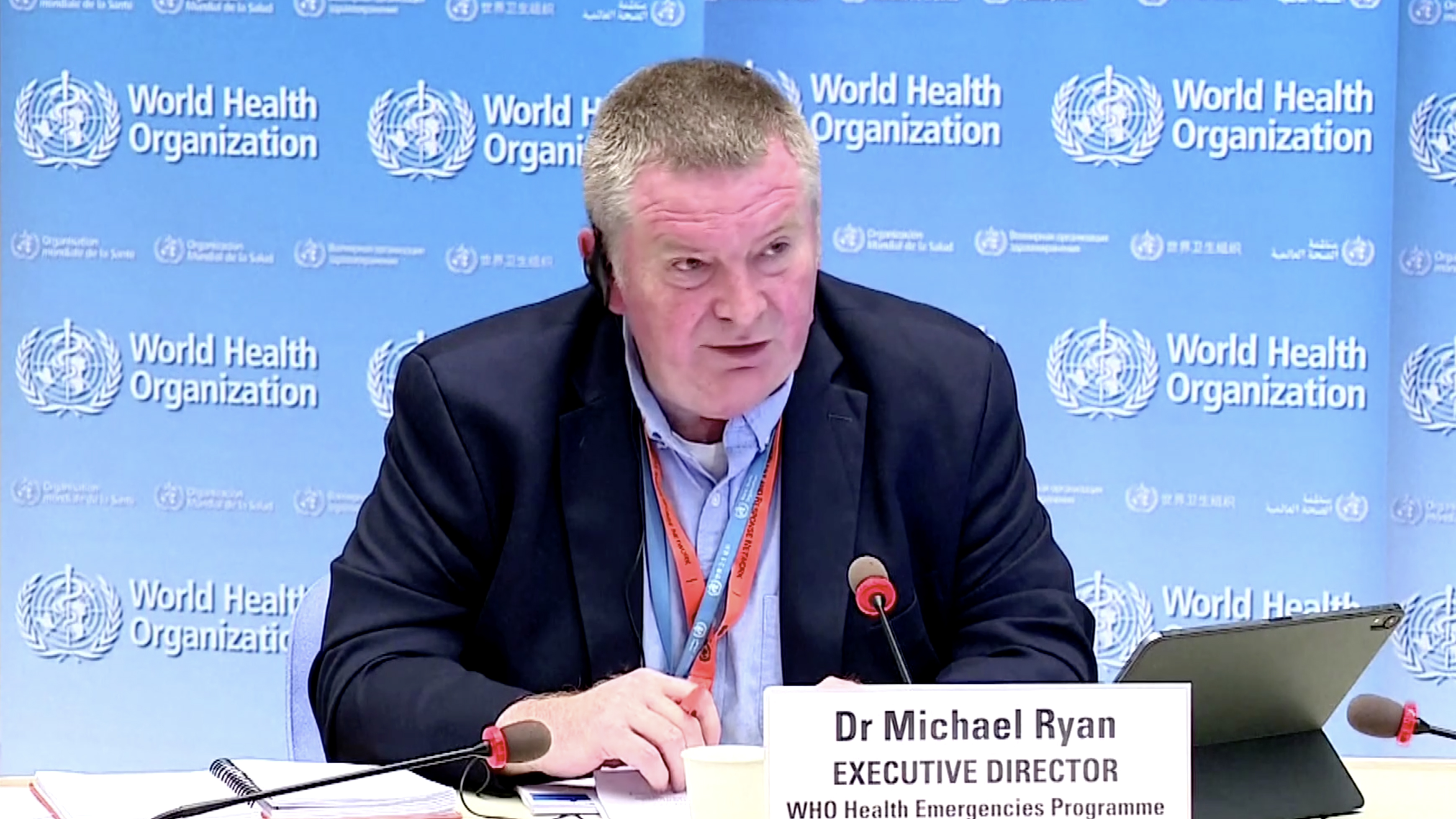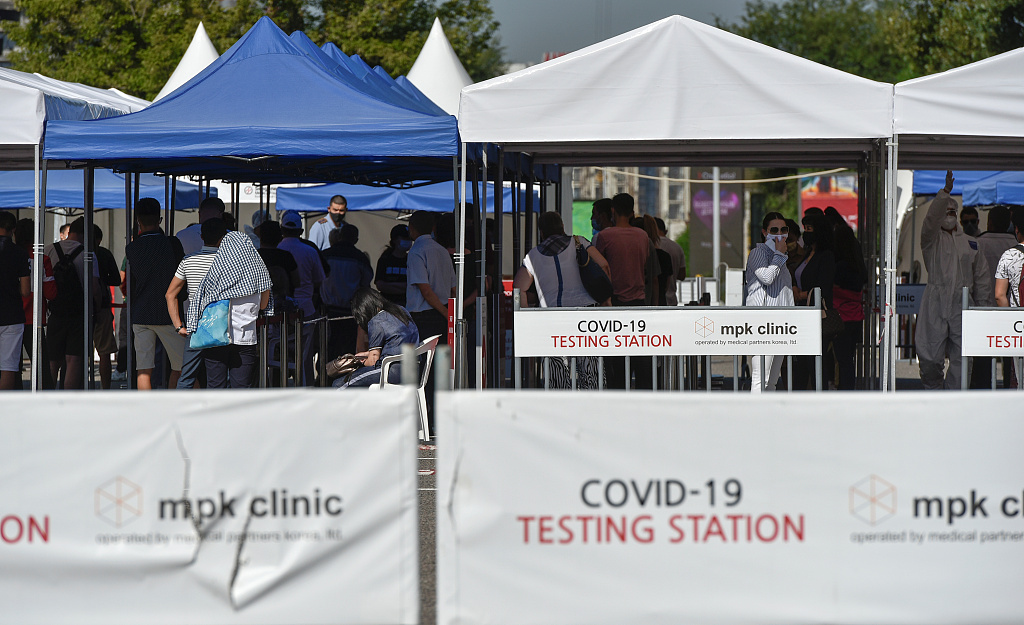01:05

Editor's note: This is the 91st article in the COVID-19 Global Roundup series. Here is the previous one.
The Chinese embassy in Kazakhstan on Tuesday warned of an "unknown pneumonia" after the country reported a spike in pneumonia cases since June, which has raised public concern about what the "unknown pneumonia" is, whether it is deadlier than COVID-19 and how the coronavirus situation is in Kazakhstan.
On the day before the embassy warned, Alexey Tsoy, the Health Minister of the central Asian country told reporters at a press briefing that the pneumonia cases in Kazakhstan increased by 55.4 percent in the first half of this year compared with the same period in 2019, adding 1,772 of the infections have died, 628 of which died in June alone.
The pneumonia cases surged in June. According to Tsoy, all registered pneumonia cases in the country rose by more than 300 percent in June compared to the same month in 2019. Related deaths rose by 129 percent, from 274 in June 2019 to 628 in the same month this year.

People line up to take novel coronavirus testing during the COVID-19 pandemic in Almaty, Kazakhstan, July 8, 2020. /VCG
People line up to take novel coronavirus testing during the COVID-19 pandemic in Almaty, Kazakhstan, July 8, 2020. /VCG
'Unspecified etiology'
Tsoy also mentioned that the total confirmed pneumonia cases in the country were 98,546. Some of these pneumonia patients are ordinary pneumonia patients, and the cause of infection in other patients is unclear.
He pointed out that pneumonia has a "potential risk", and doctors are treating the patients according to the treatment standard for COVID-19 patients. The government will provide related data about the pneumonia beginning form next week, he added.
Based on the media briefing, the Chinese embassy in Kazakhstan claimed pneumonia as "unknown" and reminded Chinese citizens to be careful about it, saying "the country's health departments are conducting comparative research into the pneumonia virus, but have yet to identify the virus."
A day after the warning, the Kazakhstan health ministry acknowledged the presence of "viral (types of) pneumonia of unspecified etiology," but denied that the outbreak was "unknown" and "deadlier," saying "this information does not correspond to reality."
The health ministry further explained in its statement that the number of pneumonia cases that Minister Aleksey Tsoy had spoken about on Thursday focused on all types of pneumonia: bacterial, fungal and viral pneumonia - including some of "unspecified etiology" based on the ICD-10 codes, under which the coronavirus infection diagnosed clinically or epidemiologically but is not confirmed by laboratory testing are also included.
The WHO issued the new ICD-10 codes for COVID-19 in March. Under the new codes, U07.1 is for virus identified, and U07.2 is for virus not identified, which includes clinically-epidemiologically diagnosed COVID-19, probable COVID-19, and suspected COVID-19.
As a response, the Chinese embassy soon rectified the statement on its website, deleting the word "unknown" and the sentence: "the death rate of this disease is much higher than the novel coronavirus."

A pharmacy during the COVID-19 pandemic in Almaty, Kazakhstan, July 8, 2020. /VCG
A pharmacy during the COVID-19 pandemic in Almaty, Kazakhstan, July 8, 2020. /VCG
Whether the 'unspecified etiology' is the coronavirus?
So far, Kazakhstan has reported 56,455 confirmed COVID-19 cases, with 254 death. Since June 8, the daily confirmed coronavirus cases continuously grew in the country with triple digits, and the number began to surge in early July, with more than 1,000 daily new cases. On July 9, it reported recorded 1963 confirmed cases.
Correspondingly, the number of pneumonia has also sharply increased. Since the middle of June, the western provinces of Atyrau and Aktobe and the southern city of Shymkent have reported significant spikes in pneumonia cases.
About 28,000 pneumonia patients with negative coronavirus tests are currently hospitalized in the country, 98.9 percent of them in moderate condition, according to Kazakhstan's deputy health minister, Azhar Giniyaton, on Tuesday.
Saule Kisikova, the health care department chief in the capital Nur-Sultan, told the news agency Kazinform that doctors were finding 600 people a day with pneumonia symptoms, compared with 80 a day before the novel coronas virus broke out.
"Every day, 350 to 400 patients are hospitalized in the city with either COVID-19 or pneumonia," she said.
The WHO, on Friday, said that it is working with health authorities in Kazakhstan to ensure the quality of COVID-19 tests and not to be confused with pneumonia amid a rise in reported pneumonia cases in the country. Its executive director Dr. Michael Ryan added that the WHO believes newly reported pneumonia cases in Kazakhstan would be diagnosed as COVID-19, "but keeps an open mind" to other possibilities.
Rafael Rogerson, a Kazakh immunology expert, said on June 29 that in addition to COVID-19, Kazakhstan is also epidemic with another unclear pneumonia epidemic, saying "Though the novel coronavirus virus has not been detected in patients with pneumonia, and the cause cannot be confirmed by a hundred percent, the pneumonia is 99.999 percent caused by the coronavirus."
Zhang Wenhong, a Shanghai-based infectious disease expert, said on Saturday that it's highly likely that the so-called "unknown pneumonia" is caused by the novel coronavirus and there may be a lack of diagnostic capacity.
"The confirmed COVID-19 cases grew rapidly in Kazakhstan, and the curve which is characterized by sudden rise and sudden fall shows that the laboratory testing is unstable," Zhang said, "Therefore, it's highly possible that the pneumonia is caused by the novel coronavirus."
He mentioned that the most urgent thing for the Kazakh government currently is to increase the testing capacity of novel coronavirus and to use in-depth sequencing and other technologies to identify the pathogen of pneumonia with unknown causes.
However, what's exactly causing these pneumonia cases remains unknown, and scientists will need to continue to monitor the situation to get a clearer understanding of the outbreak.